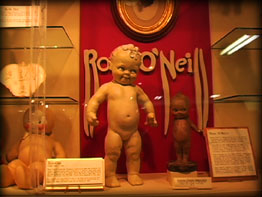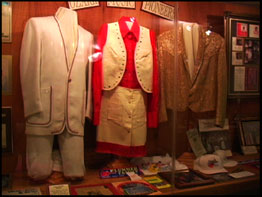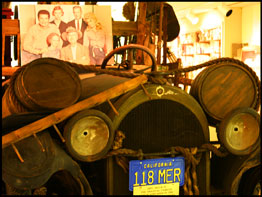Set Apart: The Ralph Foster Museum
by Joshua Heston
The Ralph Foster Museum is not like other museums — a fact important to understand from the beginning. Situated on a high bluff overlooking Lake Taneycomo and Branson, the place houses an extraordinary variety of articles.
Begun in a boys' dormitory basement in the 1920s — under the auspices of Dr. R.M. Good — the facility was originally known as the Museum of the Ozarks. The name was then changed to the Good Museum, in honor of Dr. Good. In the 1960s, the place received extensive donations from Ralph Foster of Springfield. Foster was a commercial radio and television pioneer, instrumental in developing the Ozark Jubilee. He was also a hunter, fisherman, and collector of Native American artifacts.
Much of his private collection now resides on display. In 1969, Foster's financial donations saw to the addition of a new wing, a new entrance, and a new name: the Ralph Foster Museum. The building received further additions in 1977 and 1991. At last count, it is a three-story facility with 40,000 square feet of exhibit space.
Question: What does one put into 40,000 square feet of space devoted to the Ozarks? Answer: Pretty much everything.
The eclectic — and massive — collection ranges from the serious (such as a peek into the offices of venerable past College presidents) to the amusing (a scruffy and rather stiff albino squirrel from Marionville, Missouri). In a fit of political correctness — or possibly just a slight increase in sensitivity — the two-headed calf, the bear-mauled seal and the shrunken head have been taken off display. But "George," a full-size bull moose, continues to preside over the nature displays upstairs. And the elephant poop, brought back from an African safari by a Mr. Denver Wright, is still in its case.
Still, the eccentricities serve only to highlight displays important to the preservation of Ozark culture.
The "Si" Siman Music Room is a treasure trove of artifacts from the heyday of country music, reminding visitors of a time when Springfield, Missouri, rivaled Nashville. Siman was a music publisher and producer. An original Thomas Hart Benton is reserved a place of honor. It was commissioned by 20th Century Fox for the film, Grapes of Wrath and personally donated to the museum by Benton himself. A rich collection of Rose O'Neill's work is on display, including a large — and mischievous looking — post-Kewpie prototype called "Scootles."
Paul Henning, creator of The Beverly Hillbillies, Green Acres and Petticoat Junction, donated the original Beverly Hillbillies' truck to the museum years ago. Still on display, it has become a signature piece to the facility.
And orginal documents from founding Branson music pioneers, including the Plummer Family and the Foggy River Boys, grace sections of the third floor. In the end, the Ralph Foster museum proves something important.
Like it or hate it, the "hillbilly" Ozarks have a valuable culture unique in its diversity.
We can be grateful to the Ralph Foster Museum for reminding us of this fact on a daily basis.
January 10, 2008
plate 1.

plate 2.

plate 3.

plate 4.
From top, trees native to the Ozarks is a warm, popular display; Scootles, crafted by artist Rose O'Neill; historic clothing and memorabilia from the Plummer Family; the orginal Clampetts' truck donated by Paul Henning. Photo credits: J. Heston. January 10, 2008




